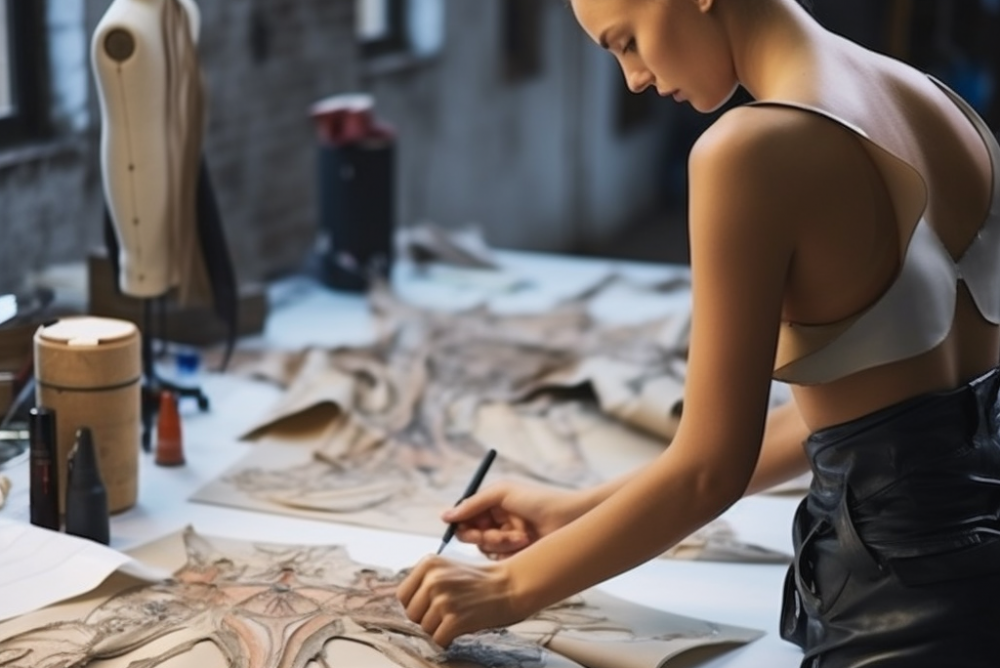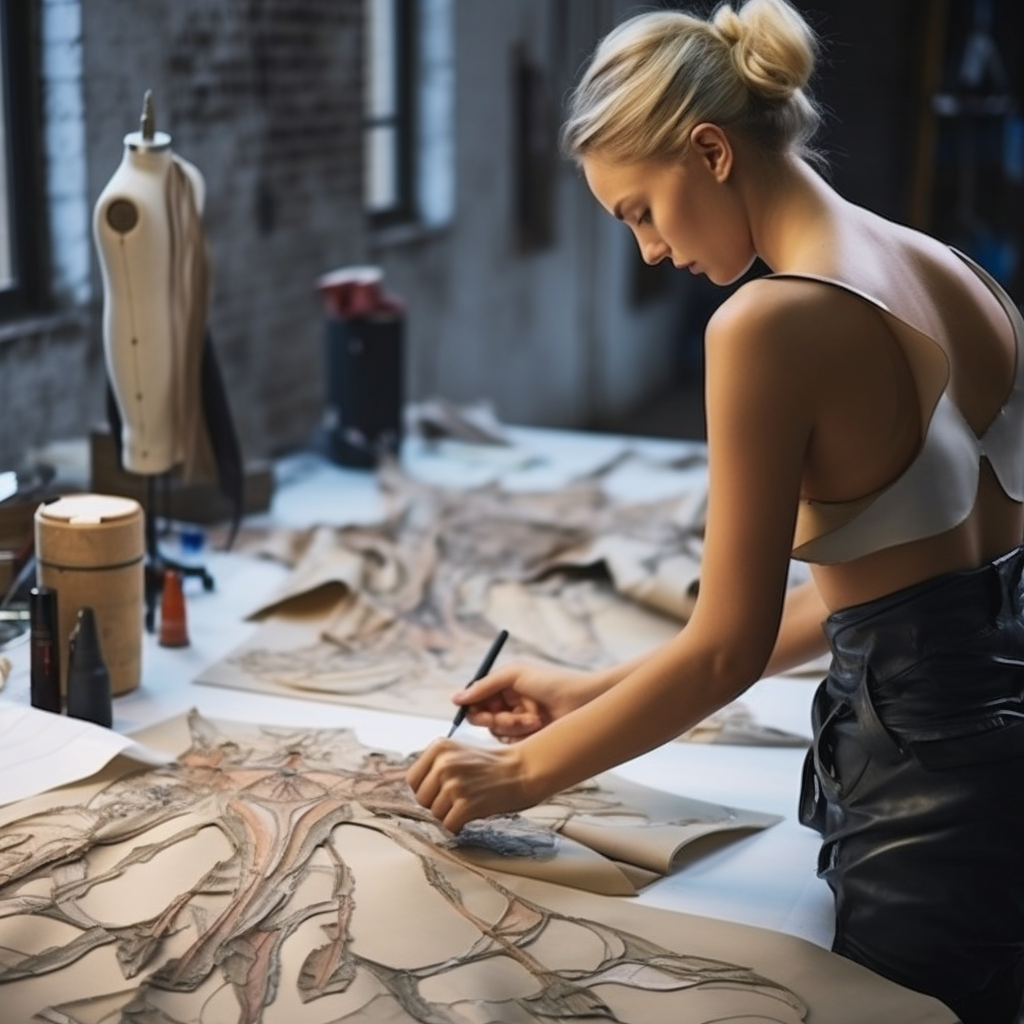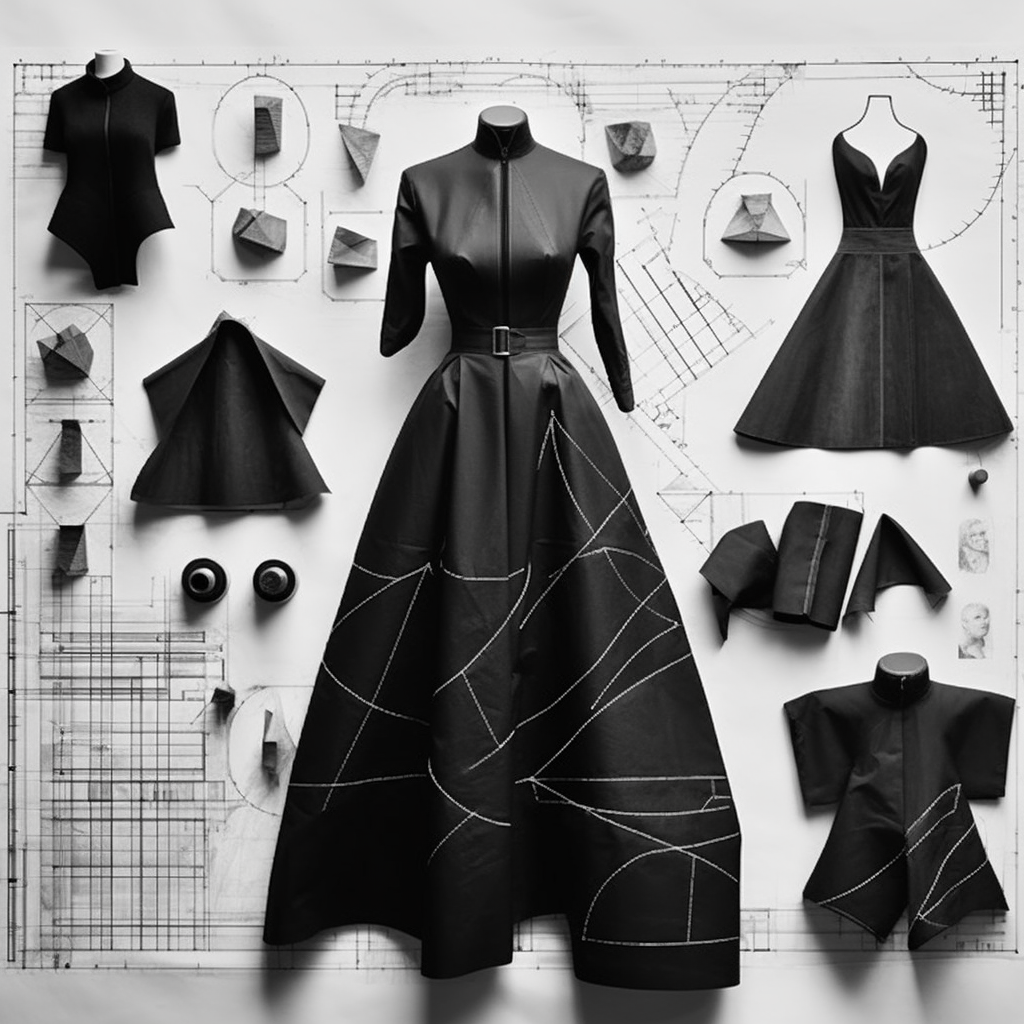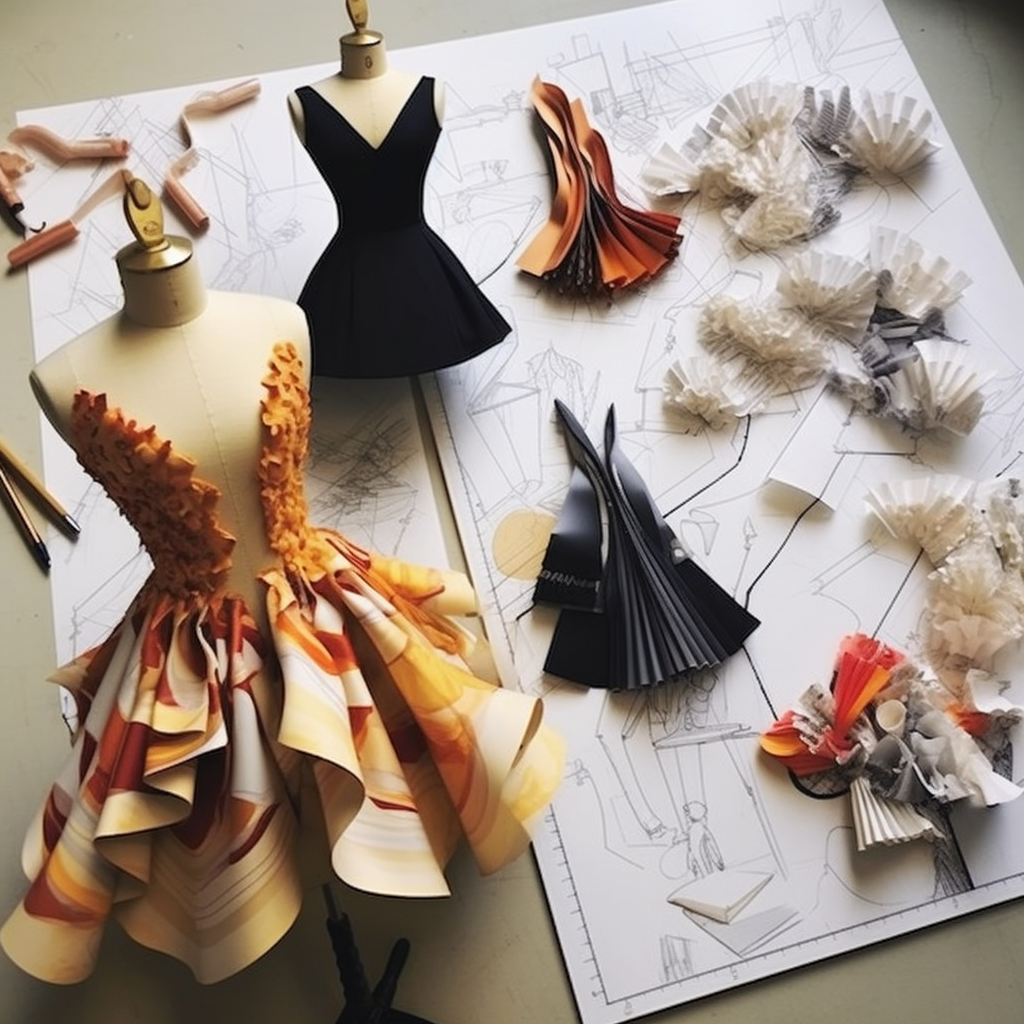Pattern Makers: The Unsung Maestros of Fashion


Fashion, in its most basic essence, is the art of creating wearable art. From the majestic gowns that sashay down Parisian runways to the everyday wear we purchase off retail shelves, behind each piece lies an intricate blueprint—a pattern. The architects of these essential templates are the unsung heroes of the fashion and apparel industry: Pattern Makers.
Pattern making is an amalgamation of artistry, geometry, and craftsmanship. It serves as the bridge connecting a designer's creative vision with the tangible reality of an outfit. For centuries, pattern makers have played a pivotal role in shaping not just clothing, but societal perceptions of beauty, functionality, and style.
In the vast world of fashion, where designers receive much of the limelight, it's crucial to recognize the invaluable contribution of pattern makers. Their work, which is deeply rooted in expertise, experience, authoritativeness, and trustworthiness, shapes the foundation upon which fashion houses build their empires.
In this comprehensive exploration, we'll delve into the intricate world of pattern making. From its historic roots to the modern technological advances, from the relationship between pattern makers and designers to the economic impact they wield, we aim to offer a thorough understanding of the role of pattern makers in the fashion and apparel industry. So, whether you're a budding designer, a fashion aficionado, or someone curious about the inner workings of the fashion world, come with us on this enlightening journey.
What is Pattern Making in Fashion?
Pattern making, at its core, is the science and art of creating a two-dimensional representation that, when assembled, forms a three-dimensional wearable item. It's the process of translating a fashion designer's sketch or design into a template from which multiple copies of a garment can be produced. This blueprint, known as a pattern, is meticulously crafted to ensure that each piece, when cut and sewn together, aligns perfectly with the designer's envisioned silhouette, fit, and drape.
Imagine constructing a jigsaw puzzle. Each individual piece, with its unique shape and cut, needs to interlock seamlessly with its counterparts. Similarly, a pattern maker ensures that each section of a garment - be it a sleeve, collar, or bodice - synchronizes flawlessly with the others, resulting in a wearable masterpiece.
Patterns can be drafted in multiple ways:
- Flat Pattern Making: Here, the designer starts with a basic pattern (often termed a 'sloper' or 'block') and manipulates it to incorporate design nuances. It's akin to using a base blueprint and tweaking it to create various designs.
- Draping: This involves pinning fabric directly onto a dress form to capture the desired shape and silhouette. Once the design is draped to satisfaction, the fabric is then removed and laid flat to create a pattern.
- Digital Pattern Making: With the advent of technology, digital software now assists pattern makers. Tools like CAD (Computer-Aided Design) allow for precise measurements, adjustments, and a visual representation before a single cut is made.
Understanding these methods, while seemingly technical, provides a profound appreciation for the meticulous attention to detail and expertise that goes into each garment we wear.
Historical Overview of Pattern Making
Long before the rise of mega fashion houses and glitzy runway shows, pattern making was an intrinsic part of clothing creation. Historically, tailors and seamstresses would take direct measurements from individuals and craft custom garments. This bespoke process ensured a personalized fit but was time-intensive.
The mid-19th century witnessed a significant shift. The Industrial Revolution brought about mass production, and with it, the need for standardization in clothing sizes. Recognizing this, Ebenezer Butterick, an American tailor, introduced the first graded sewing pattern in 1863. This innovation revolutionized the fashion industry, allowing for the replication of designs in various sizes and democratizing fashion for the masses.
As fashion evolved through the decades, so did pattern making. The Roaring Twenties, for instance, demanded patterns for flapper dresses. The 1960s saw patterns that resonated with the free spirit of the hippie movement. Each era left its indelible mark on pattern making, reflecting societal shifts, cultural influences, and technological advancements.
This rich tapestry of history serves as a testament to the adaptability, resilience, and sheer creativity of pattern makers through the ages.
Essential Tools and Techniques in Modern Pattern Making
Despite the whirlwind of technological advances, the foundation of pattern making remains rooted in traditional tools and techniques. Today's pattern makers skillfully blend age-old craftsmanship with modern technology to achieve precision and efficiency.
Traditional Tools:
- Drafting Paper: This is a transparent, grid-like paper that allows for meticulous drawing and alterations.
- Rulers and Curved Edges: Various rulers, like the L-square and French curve, aid in creating straight lines and curves, respectively.
- Measuring Tapes: A staple in any pattern maker's toolkit, it's essential for accurate measurements.
- Tracing Wheel: Useful for transferring pattern markings onto another paper or fabric.
- Notcher: This tool creates small notches in the pattern, indicating alignment points for sewing.
Modern Tools:
- CAD Systems: Computer-Aided Design systems enable pattern makers to create digital patterns. They can easily modify, scale, and adjust designs, leading to reduced paper waste and enhanced precision.
- 3D Simulation Software: This software allows designers and pattern makers to visualize how a finished garment might look on a body, even before producing a prototype.
Laser Cutting Machines: Once the pattern is finalized, these machines ensure precise cutting of the fabric, minimizing errors and waste.
Techniques:
Grading: This is the process of resizing a single pattern to create multiple sizes. It ensures that a design maintains its proportion and fit across different sizes.
Seam Allowance Addition: After drafting the actual size of the garment pieces, allowances are added for seams, ensuring there's fabric to join the pieces together.

The Transition from Manual to Digital Pattern Making
The digitization wave has not left the fashion industry untouched. Over the past few decades, the shift from manual to digital pattern making has been transformative.
Previously, pattern making was a hands-on process requiring physical manipulation of paper patterns on drafting tables. While this method had its charm, it was also time-consuming and prone to human error. Alterations meant redrafting entire sections of a pattern, and grading was a painstaking task.
Enter digital pattern making, which brought along efficiency, precision, and scalability. With CAD systems, pattern makers can now easily manipulate designs, make real-time changes, and even share digital patterns across the globe instantly. Grading, once a labor-intensive process, can now be done with a few clicks. Plus, the integration of 3D simulation tools allows for quick prototyping, reducing the need for multiple physical samples.
However, while technology has streamlined the process, the essence of pattern making still requires a human touch. A software can't replace the intuition, creativity, and expertise that a seasoned pattern maker brings to the table. Hence, the future of pattern making lies in a harmonious blend of technology and human ingenuity.
Key Responsibilities of a Pattern Maker
Pattern makers are the backbone of the fashion industry, ensuring designs come to life in the intended form. Their role is multifaceted, and their responsibilities include:
- Interpreting Designs: Pattern makers must decipher a designer's vision from sketches or verbal descriptions and translate it into a tangible pattern.
- Drafting Patterns: This involves creating the initial pattern, either manually or digitally, by considering measurements, fabric types, and design intricacies.
- Making Alterations: Based on fit sessions and designer feedback, pattern makers refine patterns to achieve the desired fit and look.
- Grading Patterns: They are responsible for scaling a design to various sizes while maintaining proportion and design integrity.
- Collaborating with Designers: Regular consultations with designers ensure that the pattern aligns with the envisioned garment.
- Liaising with Production Teams: Pattern makers work closely with production units to ensure that patterns are executable on a large scale, addressing any manufacturing challenges that might arise.
The Interplay between Pattern Makers and Fashion Designers
The relationship between a pattern maker and a fashion designer is symbiotic. Designers bring forth innovative concepts, while pattern makers transform these ideas into feasible garments. This dynamic interplay is crucial for the successful execution of any fashion collection.
Designers rely on pattern makers to guide them on the practicality of their designs. A ruffle, pleat, or cut might look appealing on paper, but its feasibility largely depends on fabric behavior, manufacturing constraints, and wearability. Pattern makers, with their extensive knowledge, provide insights on these aspects.
Conversely, pattern makers lean on designers for clarity on their vision, understanding nuances in drape, silhouette, and detailing. This constant back-and-forth ensures that the final garment is both aesthetic and functional.
Training and Qualifications for Pattern Makers
Pattern making isn't just an art; it's a science that requires comprehensive training. Aspiring pattern makers usually undertake formal education in fashion design or a specialized pattern making course.
Core subjects often cover textiles, garment construction, grading, and CAD for fashion. Beyond the classroom, internships and apprenticeships under experienced pattern makers are invaluable. They offer hands-on experience, exposing learners to real-world challenges.
While formal education lays the foundation, continuous learning is paramount. The fashion industry is ever-evolving, with new materials, technologies, and trends emerging regularly. Staying updated ensures that pattern makers remain relevant and efficient in their craft.
Economic Impact: The Value of Pattern Making in the Apparel Industry
Pattern makers may not often bask in the limelight like fashion designers, but their economic significance in the apparel industry is profound. A well-crafted pattern can lead to substantial savings in material costs, reduced waste, and efficient production timelines.
- Material Savings: Precision in pattern making ensures optimal use of fabrics. With textiles being a significant cost factor in apparel manufacturing, a meticulously crafted pattern can lead to substantial savings.
- Reduced Waste: Environmentally conscious brands are focusing on sustainable practices, and pattern making plays a crucial role. Efficient pattern layouts minimize offcuts, contributing to sustainable and eco-friendly production.
- Efficient Production: A clear, concise pattern speeds up the production process. When seamstresses and factory workers have a well-detailed pattern, it reduces ambiguity, leading to fewer errors and faster garment assembly.
- Brand Reputation: Fit and finish play a pivotal role in brand perception. An impeccable pattern ensures consistent fit across sizes, enhancing customer satisfaction and loyalty.
Challenges and Future Directions for Pattern Making
As with any profession, pattern making faces its set of challenges. The rise of fast fashion demands quicker turnaround times, putting pressure on pattern makers to deliver with speed without compromising on quality. There's also an increased emphasis on sustainability, urging pattern makers to devise patterns that minimize waste.
Furthermore, as technology integrates deeper into the industry, there's a need for continuous upskilling. Digital pattern making tools, 3D visualization software, and virtual reality are reshaping the landscape, and pattern makers must stay abreast of these advancements.
Looking ahead, the future of pattern making is promising but will require adaptability. Personalized clothing, driven by AI and machine learning, might redefine pattern making, focusing on individualized patterns over standardized sizes. Additionally, as sustainable fashion becomes the norm, pattern makers will play a pivotal role in driving eco-friendly practices.






-500x500.jpg)
-500x500.jpg)
-500x500.jpg)
-500x500.jpg)
-500x500.jpg)